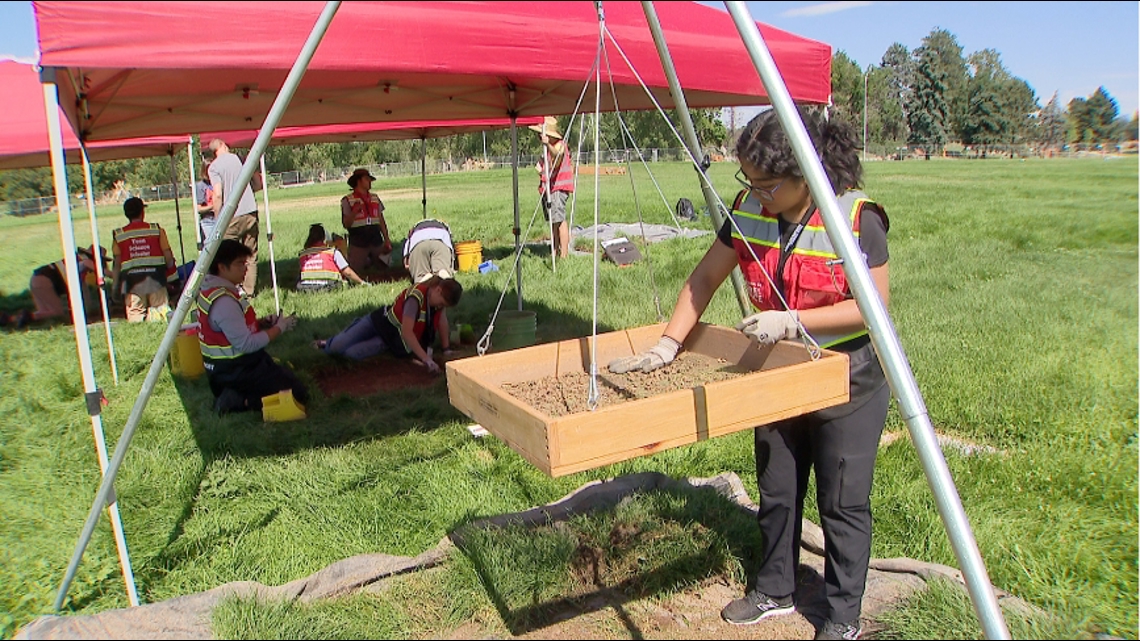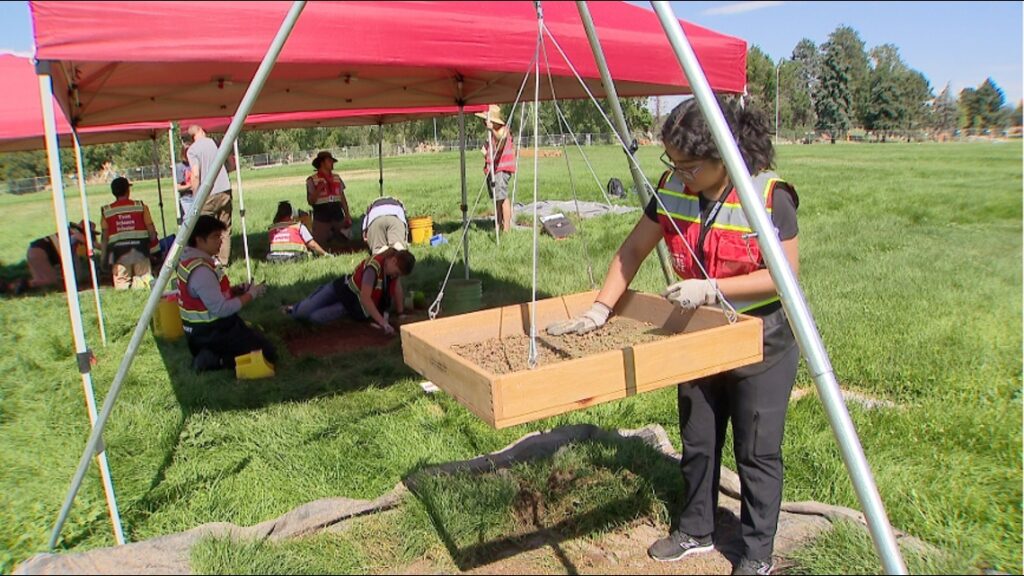The Denver Museum of Nature and Science’s Summer Mentorship Program encourages underserved youth to pursue STEM fields.
DENVER — Teens are unearthing Denver history in City Park as they get the chance to put themselves in the shoes of archaeologists alongside scientists from the Denver Museum of Nature and Science (DMNS).
It’s all part of the museum’s seven-week summer mentorship program, aimed at getting more underprivileged students into STEM (science, technology, engineering and math) fields.


Erin Baxter, archaeologist and research scientist with DMNS, said City Park has never been formally excavated before and she looks forward to learning from what she finds.
“They’re matching the photos with locations in the park where activities took place and we’re targeting those locations for archaeological investigation to see if we can find any formal gardens that haven’t been mapped before, such as the Gentlemen’s Riding Club grandstand, which collapsed in 1899,” Baxter said. “We’d love to excavate there.”
Gallery: Historic Photos of Denver’s City Parks
They used ground-penetrating radar to spot anomalies below the surface and pinpoint exactly where to look.
Baxter said Mamie Eisenhower picnicked in City Park, Martin Luther King Jr. walked there, women’s suffragists and Native American activists marched there, the list goes on and on. She said she’s excited to uncover more lost stories.
“There may also be a prehistoric history of Indigenous people living in this area, and we actually found evidence of that in the prehistoric debris that Leona uncovered last week,” Baxter said.
In addition, Baxter said they also found glass and metal fragments dating back to the past 120 years.
“I know that at some point in the early 1900s there was a road that went through here and up to the front of the museum, so I’m hoping to find something that shows that the road was here,” said Jasmine Valdovinos, a junior at Thunder Ridge High School.
Valdovinos was one of 200 high school students who applied for the museum’s summer mentorship program, and only nine students were selected to work on the City Park Archaeology Project.
“I learned so much from this job,” she said. “I had no idea there was so much in the park, and I learned how to do archaeology by sifting through soil and building one-metre by one-metre excavation sites.”
High school juniors and seniors interested in applying next year should check the museum’s website for applications in January 2025. Students can choose from areas such as archaeology, paleontology, curation and collections.
Recommended Video: Feature Articles


